Ludisia orchid is a unique flower that, despite its exotic origin, is very easy to care for at home.
Material Content:
Flower description
Compared to other varieties and species of orchids, Ludisia is not distinguished by the beauty of flowers. This species is appreciated for its chic leaves, which are the main decoration of the plant. In the wild, it is found in Vietnam, in China, in India and even in Russia. Since the beginning of the twentieth century, the Ludisia orchid has been grown indoors.
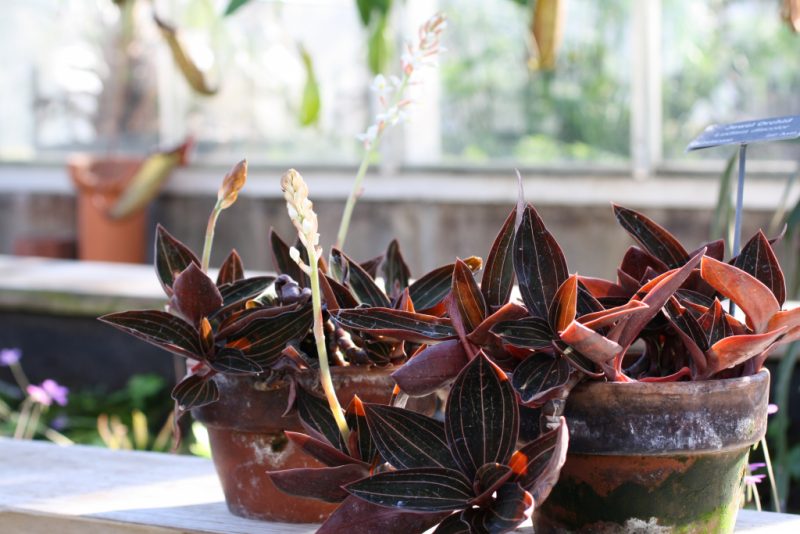
It is a herbaceous plant, which in nature is attached by its tenacious roots to moss and bark on trees. Its height is not more than 15 cm, but the stems of the flower are thick. The plant is distinguished by really chic leaves - shiny, with silver touches, bright, velvet. The palette of foliage is very diverse, and can be either purple or even black.
Ludisia orchid blooms throughout the year and does not lose its decorative effect until 7-8 years of life. Her flowers are fragrant, most often white. Very popular among our gardeners is the Ludisia discolor orchid, as well as two-tone.
Optimal growing conditions
In order for the “precious” orchid to feel good in your home, it is necessary to create suitable conditions for it. This flower loves shade, but can not accept the complete lack of natural light. Therefore, it is best to place a flowerpot next to a window facing east or west.
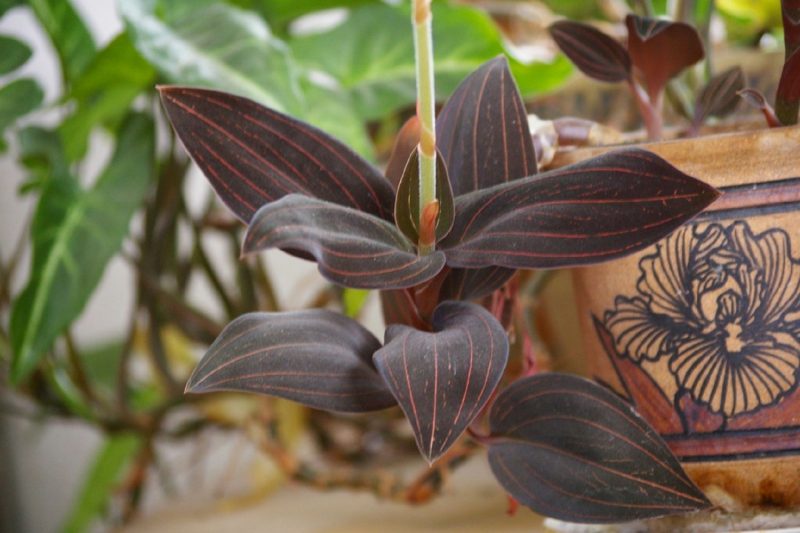
Do not place the flowerpot in the sun, as the rays can cause severe burns to the leaves.
Such an orchid perfectly lives in a room in which throughout the year the temperature is kept at about +20 - 22 degrees. It must not be allowed to fall below +18, otherwise the flower may become ill and even die. Only a temperature difference of 2 degrees at night is allowed.
The orchid may come to terms with the dryness of the air in the room, but in this case it will need abundant watering. In no case should an earthen coma dry out in a pot, as this can harm decorative foliage.
Ludisia Home Care
If you want to increase the humidity next to the flower, which is often necessary in the hot season, put water next to the flowerpot. Well, if the plant can be placed next to the aquarium.
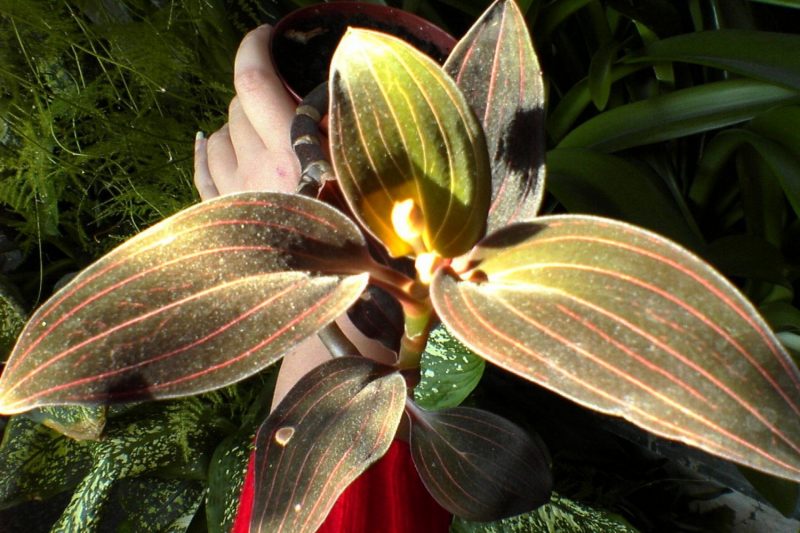
For irrigation of Ludisia, it is better to use well-maintained water. Suitable for these purposes and rain, as well as distilled. In winter, many gardeners use orchard or boiled water to water orchids.
- Water the orchid in the morning or evening at the root. Water must not be allowed to enter the axils of the leaves. If all maintenance requirements are met, then the flower will cost only one watering per week. The soil in the pot should be slightly moist.
- Fertilize the plant quite rarely - only 4 times in 6 months. They use ready-made mixtures for orchids for dressing, sold in flower shops.
Although Ludisia can bloom all year long, flowering occurs predominantly in autumn and also spring. After active growth, the plant begins a dormant period.
Ludisia is extremely demanding in her care, but if you want to achieve continuous flowering, during the rest period you should lower the temperature in the room with the flower to + 18ºС.
Methods of propagation of the "precious" orchid
The best way to propagate is cuttings. It can be carried out at any time of the year, but it is still better to work with cuttings in the spring.
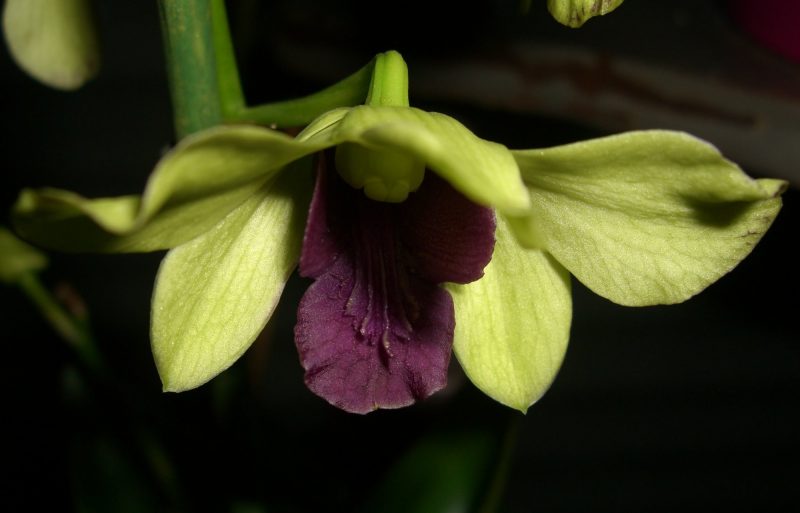
- To do this, take part of the stem, on which there is a pair of nodes.
- The slice is made with a sharp and sterile instrument, and the places of the slices are treated with green or crushed activated carbon.
- The cutlery is placed in the moss, leaving leaves on the surface.
- All buds must be removed so that the plant has forces on the formation of the root system.
Orchid Transplant Rules
"Precious" orchid, like other species, must be replanted. This procedure is carried out every two years. The root system of the flower develops quite strongly during this time, so the orchid is transplanted into a more spacious pot.

It makes drainage for planting. In this quality, you can use expanded clay or chipped red brick. Before transplanting the orchid into a new pot, the soil in it is soaked for a couple of hours, and then covered with moss.
The soil mixture can be composed independently of:
- 4 hours humus
- 4 hours peat
- 4 hours pine needles
- 4 hours moss
- 1 tsp. Birch coal
If there is no way to mix the soil yourself, you can find it ready in a specialized store.
Transplanting, the orchid is carefully removed from the pot together with a previously soaked lump of earth and determined in a new container, carefully filling all the voids with fresh soil. After transplanting, the flower is abundantly watered and put in the shade away from drafts for the first week.
It is interesting:stefanotis: home care
Pest and Disease Control
The main enemy of Ludisia’s orchid is rot. In addition, pests like to enjoy juicy, bright leaves of a flower.
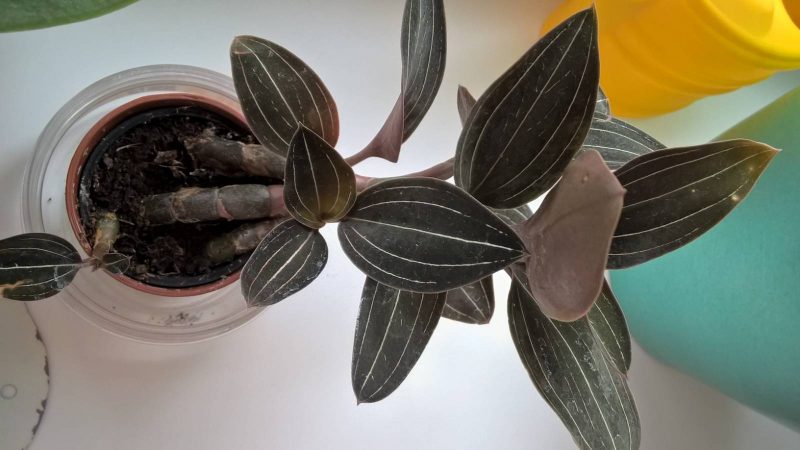
- If such a plant affects root rot, then the affected parts will begin to easily separate, and a characteristic aroma will go from them. If rot appears, the earth in the pot should be etched with “Glyokladin” and then water the flower with a solution of “Fundazole”.
- If whitish lumps appeared on the petioles of the orchid, and the soil along the edges of the pot began to recede, then a mealybug attacked the flower. Visible traces can be removed with a cotton swab, and spot horsetail tincture is applied to the localization sites of the pest.The soil in the pot should be shed by Fitoverm.
- It happens that a spider mite attacks home orchids. In this case, thin cobwebs appear on the stalks of the plant. A sick specimen should be sprayed with a solution of Neoron.
Possible growing problems
Beginning gardeners can face various problems when growing Ludisia orchids, arising mainly due to improper care.
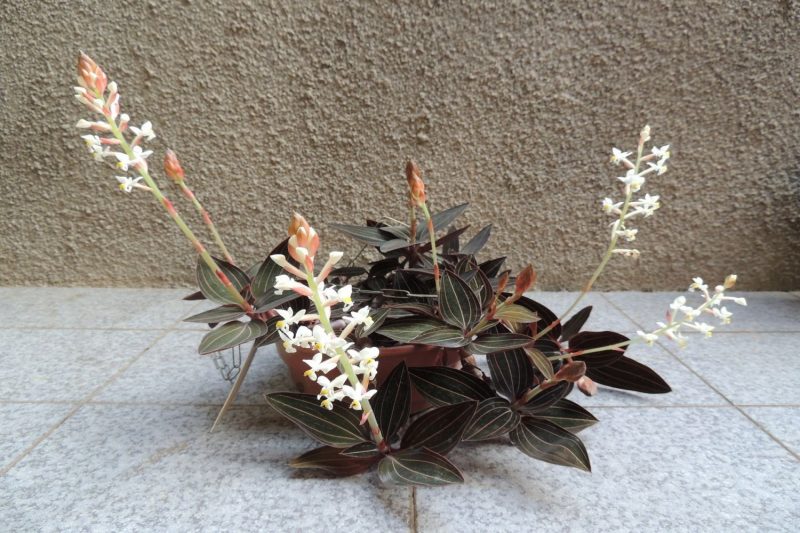
- If the plant lacks light, then its stems will begin to stretch, and the leaves will become small. In this case, the orchid needs to be placed in a more lighted place.
- With an excess of light, especially from the sun, Ludisia can get burns.
- If the leaves of the flower begin to turn red, then it is watered too abundantly.
- If the plant begins to drop buds, then perhaps it suffers from a lack of moisture.
But when grown in optimal conditions, the “precious” orchid with its lush greenery gratefully pleases the owner for more than one year.












